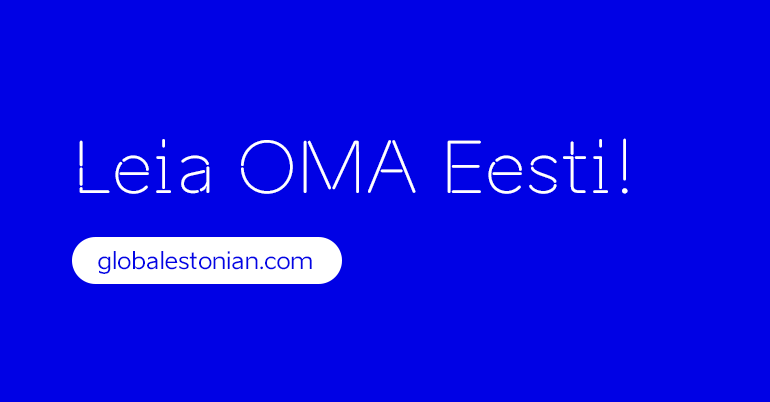The many faces of Estonian children’s literature
Kadri Naanu and Ulla Saar recommend children’s books for Estonian children living abroad.
Hundreds of children’s books are published in Estonia every year, and they include both original Estonian literature as well as translated works. Finding the best from this multitude of published books is not always the easiest task and when you are on a short stay in Estonia, the selection in bookshops can seem quite confusing. This is where the Tallinn-based Estonian Children’s Literature Centre steps in to help parents, as their website has book recommendations for readers of all ages and also children’s books with slightly simpler language that could help children living outside Estonia become well-versed in their native language. The centre’s experts also make monthly book recommendations at the book portal of the Postimees daily, which are also listed on the website.
Parents often want to share their childhood favourites with their children. While reading the classics has its benefits, the favourites of our youth can feel a bit distant to today’s children. This is why the centre encourages children to read current authors. New and fresh writers, like Kairi Look, Anti Saar, Andrus Kivirähk, Kadri Hinrikus and many others have enriched Estonian children’s literature, and helped many people find their way to books and reading. The positive outlook and masterful language of these writers help develop children’s vocabulary and increase their sense of empathy. It is not rare for both the children and parents to have fun when reading aloud.
Every year, the share of picture books has increased and young readers can enjoy the work of many illustrators of the new generation, who have become as cherished by the children of today as Edgar Valter’s works used to be by their parents. Our children’s literature scene would not be the same without the pictures of Kertu Sillaste, Piret Raud, Sirly Oder, Marja-Liisa Plats, Anne Pikkov and Heiki Ernits. The website of the Estonian Children’s Literature Centre includes profiles of currently active authors and illustrators and an overview of their work.
One of the most notable modern authors is Anti Saar, whose warm and children-friendly books are a joy to read both for little and grown-up audiences. According to the author, his most popular books is Anni asjad, with illustrations by Anne Pikkov. The book uses everyday situations and objects close to children’s hearts to describe how a toddler grows up. Saar says the book also speaks to older readers.
The classics of our children’s poetry have been complemented by the text of verse Kuhu lapsed said? by Indrek Koff with illustrations by Elina Sildre. Immediately after it was published, the book gained a lot of attention and has won several awards in Estonia and abroad. Koff describes how the children of a small town, tired of being ordered about, decide to move to the forest together. Various officials try to lure them back but eventually they only succeed using the joy of playing. This way, the author underlines the importance of enjoying life and being playful. The fun and inventive illustrations only perfectly highlight the core message of the text.
Books have always offered an entertaining way of learning history. On kuu kui kuldne laev by Juhani Püttsepp, with images by Latvian illustrator Gundega Muzikante, recounts painful events in Estonian history in a children-friendly manner. The book’s protagonist Keete is forced to flee across the sea to Sweden with her teddy bear Pätsu during the Second World War. Püttsepp describes the events of the war through the eyes of a child and uses the thriller format, making the difficult subject of the book approachable and safe for children.
One of the most translated Estonian authors today, Piret Raud treats readers to Juurtega aed with both text and illustrations by her. This heartfelt work teaches children how to be tolerant and friendly, and that sometimes just feeling good is the most important thing.
The picture book Kõige õigem by illustrator Kristi Kangilaski carries the same message. The book tries to find out whether there is the best possible way of living. After some journeys, the book’s protagonist, a king, finally concludes that more than one right way can be found in the world.
Andrus Kivirähk has enriched Estonian children’s literature with many works. His Sirli, Siim ja saladused is a fun read for younger and older audiences, telling the story of the dreams and secret worlds of members of a perfectly ordinary family.
Illustrator Kertu Sillaste has brought a lot of variety to Estonian children’s literature with her distinct and beautiful books. For example, she published the first Estonian silent book, titled Appi!. Kõige ilusam seelik talks, in words and images, about the birth of the folk costume skirt from the Lihula region. Pisikeses majas uses all kinds of bric-a-brac to convey the plot, which makes for one fantastic story.
These books are only a brief insight into the varied world of modern Estonian children’s literature. Admittedly, it is difficult to get these books when living abroad. Thankfully, it is easy to order books for your children from online bookshops. When visiting Estonia, you can pop by the website of the Estonian Children’s Literature Centre before going to the bookshop to make sure that, in addition to classics, excellent books by currently active authors and illustrators make their way to your basket.







